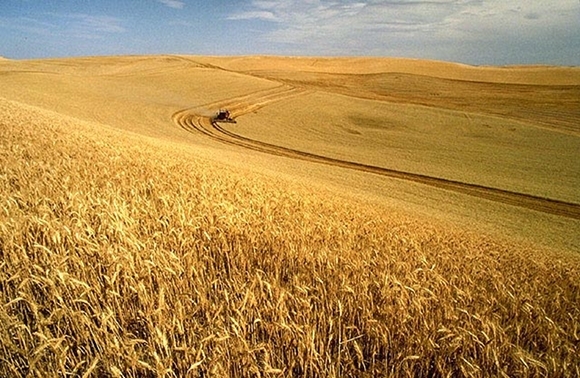This article is more than 1 year old
Boffins BREAK BREAD's genetic code: Miracle of the loaves
Climate change? Population growth? Maybe science can help
A crack team of international boffins have done a "shotgun sequencing" of the wheat genome that will help increase wheat yields and thereby feed the world.

Wheat is one of the big three globally important foods, along with rice and maize, and it accounts for 20 per cent of the calories consumed by the entire human race.
Improving existing crop yields and resistance to disease is the best way of feeding a growing world population, given the lack of land to plant to wheat.
The bread wheat genome is incredibly complex, having descended from three ancient grass species, it has around five times the amount of DNA found in a human genome. A lot of the genome consists of repeated sequences, but it has so far been difficult for scientists to figure out which bits are repeats and which are unique.
Instead of decoding the entire genome, the researchers concentrated on one of the ancient ancestors of wheat and used that, along with comparisons to a range of other grasses like barley, to to help figure out which sequences which were repeats.
The ancient parent species Aegilops tauschii was decoded by a US team led by Jan Dvorak at the University of California Davis and Richard McCombie at the Cold Spring Harbor Laboratory, along with boffins from the USDA, Kansas State University and North Dakota State University.
That team passed the sequence onto British boffins from the Universities of Liverpool and Bristol, the John Innes Centre and the European Bioinformatics Institute.
"The raw data of the wheat genome is like having tens of billions of scrabble letters; you know which letters are present, and their quantities, but they need to be assembled on the board in the right sequence before you can spell out their order into genes," Professor Neil Hall of the University of Liverpool said.
"We've identified about 96,000 genes and placed them in an approximate order. This has made a strong foundation for both further refinement of the genome and for identifying useful genetic variation in genes that scientists and breeders can use for crop improvement."
Even though the full sequence hasn't been mapped yet, what the boffins have done so far will help to develop new varieties of wheat.
"This research enables breeders and researchers to generate huge numbers of genetic markers to identify regions of the wheat genome carrying useful traits. This is one of the key practical uses of the genome resources we created," Professor Mike Bevan of Liverpool said.
"With markers, breeders can track the genetic makeup of plants when new varieties are being bred. Plants lacking the desired traits can be eliminated more efficiently, and those with desired characteristic identified more quickly, speeding up the production of new varieties from a far wider range of wheat varieties, including wild relatives that have many useful traits such as disease and stress tolerance."
The study, which also had help from the Institute of Bioinformatics and Systems Biology in Munich, was published in Nature. ®
